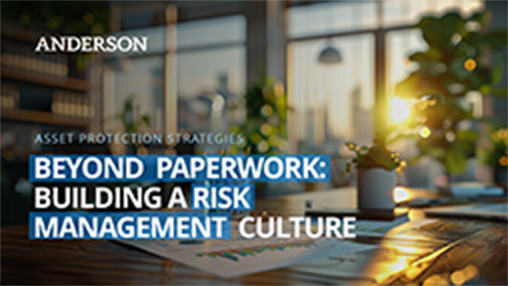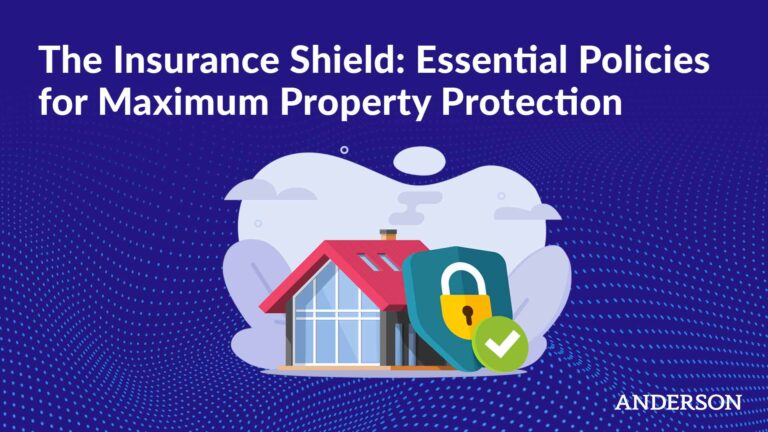
Do you freak out about your money when the stock market crashes or during other financial crises? Do you need someone to listen and offer sound stock market strategies?
In this episode, Toby Mathis of Anderson Advisors talks to Erik Dodds, an independent fiduciary who focuses on stock market investing. Also, Erik is the managing consultant for Anderson Financial Services (AFS) and mastermind for the Infinity Investing Workshop.
Erik finds talking about stocks, dividends, mutual funds, and other financial matters to help people with their money is fun!
Highlights/Topics:
- Current Marketplace: COVID takes market down at rapid pace and creates panic
- Future Marketplace: Erik predicts possible bigger, better stimulus in February
- Advice for Traders: Take some winnings off table; no need to actively trade all the time
- Preferred Portfolio Options: Hedge from volatility indices/instruments to cash balance
- Puts and Calls (Naked or not): What they are, how they work—always protect yourself
- Select System: Traders need to be disciplined on when to buy and sell; keep it simple
- Dividend Kingdom: Are you an aristocrat or king stock/option? What’s the difference?
- Growth vs. Value: Pay for consistency and cash flow, not up years
- Real Estate and Stocks: Don’t fight feds that keep rates low—buy assets
Legal Disclaimer:
Futures, stocks, and options trading involves substantial risk of loss and is not suitable for every investor. The valuation of futures, stocks, and options may fluctuate, and, as a result, clients may lose more than their original investment. The impact of seasonal and geopolitical events is already factored into market prices. The highly leveraged nature of futures trading means that small market movements will have a great impact on your trading account and this can work against you, leading to large losses or can work for you, leading to large gains.
If the market moves against you, you may sustain a total loss greater than the amount you deposited into your account. You are responsible for all the risks and financial resources you use and for the chosen trading system. You should not engage in trading unless you fully understand the nature of the transactions you are entering into and the extent of your exposure to loss. If you do not fully understand these risks you must seek independent advice from your financial advisor.
CRG Wealth, LLC (“RIA Firm”) is a registered investment adviser located in Las Vegas, NV. CRG Wealth, LLC may only transact business in those states in which it is registered, or qualifies for an exemption or exclusion from registration requirements.
CRG Wealth, LLC, Canyon Ridge Group, LLC, and their representatives do not provide legal, tax preparation, or accounting advice. Persons who provide such advice do so in a capacity other than in the capacity of working with the above-referenced firms.
Anderson Financial Services, LLC, Anderson Business Advisors are unaffiliated with Canyon Ridge Group, LLC & CRG Wealth, LLC.
Resources:
Infinity Investing Workshop: https://infinityinvestingworkshop.com/mm/
Anderson Advisors Tax and Asset Protection Event
Full Episode Transcript:
Toby: Hey guys, this is Toby Mathis with the Anderson Business Advisors Podcast. Today, we’re going to be talking with Erik Dodds, who works with us on the Infinity side, but Erik is an independent fiduciary. He’s out there doing stock market investing all the time; he’s always in those markets. Welcome, Erik.
Erik: Thanks, Toby. Thanks for having me. Hi, everyone. I hope you’re doing well today.
Toby: Give us the five minutes sketch, the down and dirty about Erik Dodds. What do you do? How do you help people?
Erik: A little history about myself. I got into financial services around 2001, which was obviously a really fun time to do financial services as the dot-com was—
Toby: Great timing, Erik.
Erik: Yeah, it’s perfect timing. I’ve only been through three major crises in my 20-year career almost. That was really fun to talk with people about their money when everyone’s freaking out about the dot-com crash. I’ve been in financial services for almost 20 years now.
I tell people I got my start when I was a kid. My grandfather who’s in Ohio—essentially a farm boy, raised three daughters, worked for Ohio electric, so just a blue-collar guy—always loved to talk about stocks and dividends. He’d come out and visit, sit me on his lap, show me the business pages, and explain all that fun stuff to me.
Bob Evans Farms, I still remember that one because that’s a good old Ohio fast-food company. We looked at stocks, he explained it to me, and I just thought it was the neatest thing. I don’t think it’s set in until I realized after I got out of the military.
While I was in the military, I was finding myself helping my shipmates. They’d asked me a lot of questions and it was a lot of fun to educate them on financial topics at the time, mutual funds, retirement accounts, and all that stuff they were wondering what I was doing. I educated them on it, and when I got out, I realized that this is what I was put on earth to do, other than being a father and a husband. That’s what I’ve been doing for the past 20 years.
I’m married to my wife, Crystal, who did 14 years in the school district. I have six kids, so to take care of most of the little one, she left the school district and the rest is history, so it was a lot of fun. I tell people I have (I think) one of the best jobs in the world where I get to help people with their money. I like to do investment strategies myself so it’s a lot of fun. It’s really good stuff.
Toby: With us, just so you guys know, Erik does a lot of the training, and he runs the training rooms for Infinity Investing. He gets on with people, and they do live training. It’s fun.
Erik: Yeah. It’s a lot of fun.
Toby: Let’s talk about the current marketplace because there’s a lot of anxiety out there. What do you see going on in the marketplace? We are recording this before the presidential election about three weeks prior. I’m just curious because then we can hold you to your calling here. We’ll be able to say, look what happened? Erik was so wrong. What do you think is taking place?
Erik: We can go back and say how great of a prediction when we did one of these back in April when we looked and said, hey, everyone’s freaking out. I think your comment was these things don’t last. What are we seeing now? Let’s go back a little bit. We had a run-up from an absolute slicing at the knees. COVID just took the market down at a rapid pace, lots of panic, and lots of uncertainty. As things seemed to stabilize a little bit, things became a bit more certain.
Obviously, the market worked its way back up. You’ve got a couple of sides of the fence right now. You’ve got some saying, hey, things are exhausted. They’ve got at a high point. When is this going to come back down? People fearing they missed out. I look at the month of September; it was a very volatile month. When I looked at the charts, there was a lot of fluctuation in September. Coming into October, it’s in a choppy range.
That’s a question we get the most right now is what’s going to happen. We’re in this choppy range as everything is coming into the election cycle. No one really wants to commit one way or another.
Toby: I think they’ve priced in the blue wave because I’ve heard a few folks that the market thinks there’s stimulus coming so that’s why it’s…
Erik: Right. I think what they may have already priced in is the election and it could already be priced in, in the fact that if it’s Democrats all the way down the ballot that come February, once everything is settled that there could be bigger, better, huge, or more stimulus coming.
Toby: I’ve heard $7 trillion-ish numbers.
Erik: Yeah. Again, we’ll see where that happens, and it’s interesting as all this is going on. What I’m telling people is this. I get to talk with a lot of traders one-on-one and just investors in general who have questions. For the traders out there, if there is trepidation, fear, or worries about what’s going to happen in the market with the election cycle, hopefully, you’ve had a really good run-up, and your portfolio looks really good from March lows until where we’re at now. Take some of your winnings off the table if you want. You don’t have to be actively out there doing trading every day, every minute, and every hour if you don’t want to. There’s nothing wrong with pumping the brakes.
Toby: Do you ever have people just buy a put in protective position or do you just stay away from that stuff?
Erik: There are a lot of different ways to hedge that’s not necessarily my preferred way you can do it.
Toby: What’s your preferred way?
Erik: I think there are some other hedging instruments out there that you can do. I like using the volatility indices or you can even use VXX, not a recommendation. Obviously, as a financial advisor, you have to look at it, but one thing that we look at adding in a portfolio or some of the volatility instruments that are there.
Toby: Is that in a market position? Is that something that goes offset, so if the market tanks it’s going to pop up?
Erik: Exactly, generally speaking, which was interesting leading into September if you look at the charts. While the S&P was continuing to run up leading into September, VIX was also working its way up. Normally, those two things should not be in. So were bonds as well, and normally those should not be working in unison.
Toby: They got inverse, right?
Erik: Yeah, it was a little bit of a sign. You can use those as what’s coming down the pipeline. Again, it’s not going to be a perfect indicator, but that is a way that you can use a hedge or some of the volatility instruments that are out there that they’ve got. Those would be things that are not necessarily good, long-term holdings because essentially, they’re using hedging instruments to hedge so they can depreciate and it can depreciate.
If you look at the chart of (say) VXX, it spikes and then falls back off, and spikes and falls back off. It’s something that if you wanted to hedge in the short-term, you could certainly do that and then add on some advanced strategies on top of that.
Toby: What’s another way that you tell people to protect them from all this volatility?
Erik: Cash balance is important. We do a lot of options strategies. Some of the things that we look at are you can still not be fully invested and still generate nice income on your portfolio.
Toby: Let’s say I’m sitting on some cash. I could do a covered put. Is that you’re looking at, something like that?
Erik: Yeah. I get pretty in-depth on the charts. I would look and say, I’m not going to rush into a trade in one way or another. I’m going to try and take the opportunities as they come to me and wait for things to come to me, and then as you said, sell puts against it so I can generate some income.
Really, I’m not fully committed to the equity in that way. I don’t own the shares, so I don’t get the dividends. All I’m saying is if this thing falls any further, if this stock or ETF falls further, then I get to buy it at a discount. Meanwhile, I’ve been paid to do it.
Toby: Explain what that means because some people are not big stock traders out there. When we’re talking about put, what it is, and how you’re using it?
Erik: With any transaction, there’s going to be a buyer and a seller. I tend to lean more on the selling side of options. I like to be the insurance company, not the insured or the casino, not the gambler. When you sell a put, what you’re saying is I’m committing this amount of cash.
Let’s say I’m going to use Coca-Cola as an example, which is hovering around $50 right now. I could sell a put on Coca-Cola, let’s say at the $49 strike price, that says if Coca-Cola goes down to $49, I’m willing to buy 100 shares. I have to tie up $4900 of my capital, 100 shares worth at $49 strike price to have there as collateral in case Coca-Cola gets to $49.
As the premium seller, as the one who sold the option, the premium buyer, or the buyer of the option has to pay me a premium. Actually, you can use that income and effectively generate income off of my cash and use that as capital, that if Coca-Cola does get to $49, I buy the shares and I’ll start turning around and selling options against it.
Toby: A put is a fancy way of saying to somebody, you can make me buy it at a certain price. The Coca-Cola is at $50 and you’d buy it at $50, you can sell a put at $49. You can make me buy it at $49. I’m not going to buy it at $50 right now, but you can force me to buy it at $49. If you buy it at $50, then $49 is great, and not only do buy it at $49, but they pay you so they can force you to buy it for you.
Erik: Yeah, it’s funny. Actually, I had a conversation this morning with someone where they asked that I don’t think it was all fully registering yet about how puts work. She said, well, if I want to buy it at $47.50, why don’t I just watch it every day, and then when it gets to $47.50 I’ll buy it. I said, well, wait. Here’s the way it works. You can either wait or you can get paid to wait. Which one sounds better to you? I’d rather get paid to wait for it to come down.
Toby: This is if you have the cash at your side. What we don’t ever talk about is naked puts, that’s when you’re selling somebody the right to make you buy something where you don’t have the cash or the shares. You make sure you have the cash aside just so that it would keep them out of trouble.
Erik: Yeah, and even worse than that would be a naked call. Where effectively, you have an unlimited amount of risk there because you have to sell them the shares, and if you don’t have those shares, now you’re sitting out there. You got to buy in at whatever that going rate is.
Toby: No naked. Let us make it real simple. No naked. You know it’s not going to be covered. Just remember that we don’t run around exposing ourselves to the public.
Erik: Even though we’re on Zoom calls, and they can’t see us from the waist down.
Toby: That’s right. Make sure you’re covered. That’s interesting. What are some of the things that the people you work with are doing that’s been successful recently?
Erik: Again, it goes back to the charts. I think the biggest thing if you’re going to be an investor or a trader is to have a system. Not every system is going to be right for you, but discipline. You could go on YouTube and see 800 different opinions on when to buy and sell and when to do this.
Pick what works well for you, keep it simple, focus on that discipline, and be disciplined going into the trades. Again, I guess my world usually revolves around a lot of the dividend kings, aristocrats, or other stocks, but dividend kings and aristocrats. We’re educating people on how to use those and sell options.
Toby: What are those? Just put them in a nutshell what a dividend king and aristocrat are?
Erik: Aristocrat is a stock that’s paid dividends for at least 25 years. They’ve made it to an elite club where they’ve paid and raised dividends for 25 years. A king is one that’s done it for 50 years. Again, it doesn’t mean that they are completely prevented from going down, but the Infinity model of that is we’re trying to filter the universe to stocks that have had a lot of consistency in them.
Toby: Compare that with a growth stock. Everybody hears about Apple, Facebook, Netflix, and Google. They’re chasing after these things. Tesla is going to go up to $1 million. What’s the difference between a dividend king or aristocrat philosophically from a growth stock?
Erik: I would say it’s just that, growth versus value. On the kings and aristocrats, those are value stocks. You’re not paying for the 20%-up years, 50%-up years, or whatever it may be. You’re paying for the consistency. I guess an analogy, I like sports, so a good sports analogy is you’ve got your singles and doubles. Hitter, that’s your kings and aristocrats. And then you’ve got your home run hitter, but unfortunately, the home run hitters can sometimes strike out. That’s your growth stocks.
Toby: It’s McGwire.
Erik: Yeah, it’s McGwire. I love McGwire. I love watching him play growing up.
Toby: I think he had the most strikeouts. I forget who it was. Barry Bonds or McGwire, one of those guys just got strikeout an insane amount of time, but they also bat a lot of home runs.
Erik: Oh, yeah. I’ll never forget that McGwire-Sosa summer, where they were just both going neck-and-neck, hitting home runs back-and-forth. That was pretty cool.
Yeah, that’s what I would look at. Your lineup, your all-star team has to be your all-star team. You’re going to be the one who’s drafting these players. If you want a couple of home run hitters in there, that’s up to you, but just know those are going to operate a lot different than a king and aristocrat where it tends to be more stable not all those wild fluctuations. It’s a little bit more consistent.
Toby: Tend to score a lot more runs. Let’s put it that way. If you’re sticking to the fundamentals and doing doubles and singles, you’ll get more people across on plate than if you’re trying to go after home runs all the time. Not that home runs are bad. They’re exciting, but you do have a lot of strikeouts. You have a lot of times when you go through slumps.
In a nutshell, the way I look at it is if I’m going to own something I want it to pay me. If I’m going to own a business, I want it to pay me something. I don’t want to just wonder, hey, maybe I’ll sell it in 10 years double. That’s not exciting to me because that’s not a continuous revenue stream. What’s exciting for me is if I own a house, I want to rent it to somebody. I want those rents and that’s what it came is that’s paying you to own it versus like on Amazon, they never give you a single bit of profit ever. They just retain all their money.
Erik: Yeah. You’re a real estate cash flow guy, so you get the idea of essentially treating these consistent rental stocks. The first step of rent is going to be dividends. We talked about it in the investing rooms and we talked about it in all the workshops that we do. We talk about how you can take that first layer of income, and you can add on another 1–2 layers of income on top of it, so now you have potentially 3 incomes coming from the same block of capital.
Toby: You add the additional layers. What are the additional layers for you?
Erik: If I’m doing, I guess I would call the more advanced strategy for that, is selling puts initially, I’m going to generate income on my cash, and that’s my first set of income. If the stock falls down to the level at which I set the strike price at, then I own 100 shares. Now I can turn around and I get dividends, so that’s income number two, and income number three is I can start selling that covered call, essentially renting out my stock, which means I’m agreeing to sell a stock, those 100 shares at a certain price if it gets to that price or above. That also because I’m the option seller is going to generate an income for me that I get to keep regardless of what happens to the stock direction. Those three levels of income are ones that I would look to generate on it.
Toby: Yeah. To me, that’s like a compound. At best the secret sauce that generates you much more income over a lifetime. A lot of folks don’t realize that when you look at the stock market, about 40% of its gains are from the dividends, and if you’re buying a company that doesn’t have dividends, then you just got a lot of your opportunities for gains.
Erik: Yeah. But we’re picking, right?
Toby: Yeah. Something we’ve never talked about but your grandpa, is that what he focused on? Was he looking at companies that were producing revenue they could live on? What was his deal?
Erik: He had a pension and Social Security back then. He was pretty stable with that, but he loved investing, so he focused on value. He was more of a value. He was what you would call a value. I caught him, of course, later on in life. That’s something I’m talking about. He was in his 70s and 80s when he was showing all this stuff to me, but he was definitely a value investor and loved dividends.
That money has passed onto the next generation. That’s gone to my parents now. You look at those portfolios, a lot of those stocks are still in there. Those are just heavy dividend-paying stocks that they bought way back then and still are holding.
Toby: It’s interesting. Buffett’s considered the grandfather of value investing. I just say that tongue-in-cheek because he’s like the prototypical value investor. Though he’s changed a lot recently. Some of the things that he’s doing, just to keep up with the times. The thing was Coca-Cola when he bought Coca-Cola. The dividends that Coca-Cola is paying now would buy shares (I think) on an annual basis. I forget the actual numbers, but it was something ridiculous over the years, and he bought them in the 80s. Over this period of time, the stocks grew and that dividend is still increasing every year, that now the dividends that he’s receiving are just as a factor of the growth is enough to where I would buy all the shares, like it covers the basis and most things.
Erik: He’s paying with the house’s money at this point, basically.
Toby: Oh, not just the house’s. Every year, it’s doubling from what you originally put into it. That’s how compounding works because it’s fun. Any other things that you’re looking at with your crystal ball that you’re thinking of in the future that you want, that you’d say people should be paying attention to?
Erik: I just think that from a Fed standpoint, I think they’ve been pretty clear that rates are going to stay low, which signals to look, buy assets. You’re going to have to be buying assets and really the two things that you can throw precious metals and cryptocurrencies in there if you want. If you look at the Infinity model, maybe that falls into the cash portion, but generally speaking, I think what they’re saying are real estate and stocks.
We’re at a ‘don’t fight the Fed’ moment right now, because they’re printing and keeping rates low. That’s how it looks right now. Until otherwise, I think that’s what we need to be doing.
Toby: And keep your eye on inflation, right?
Erik: Yeah, and you have to have assets that are going to outpace inflation.
Toby: Absolutely. Keeping it in cashes, do it at your own risk right now. Make sure that cash is doing something, generating some income. Erik, I really appreciate you coming on. If somebody wants to get a hold of you, how do they get a hold of you?
Erik: I would love for them to go to the Infinity portal because if they’re not members of the Infinity portal, they can sign up for that. If they are, they can go there, and you’ve got my contact information there. You’ve got my email, erik@canyonridgegroup.com. A lot of different ways to get a hold of me.
Toby: We’ll throw that out there. If you’re part of Infinity, by all means, you’re going to run across Erik anyway because he teaches the Infinity workshop with me. We’ll put the links up. You can always come in. It’s free. It’s not something that it’s a beating over the head with anything.
We have a group, we like to invest together, and we like to grow together. At a minimum, we have a monthly class that’s free that people could certainly join. There are enough videos in there to keep you busy for a long, long, long time. We get hours and hours and hours of this stuff. Anyway, thanks, Erik, for joining us. I really appreciate your time and I hope we get something out of it.
Erik: Thanks for having me. It was a lot of fun.
Toby: Cool.
Erik: See you next time.
As always, take advantage of our free educational content and every other Tuesday we have Toby’s Tax Tuesday, another great educational series. Our Structure Implementation Series answers your questions about how to structure your business entities to protect you and your assets. One of my favorites as well is our Infinity Investing Workshop.
Additional Resources:







